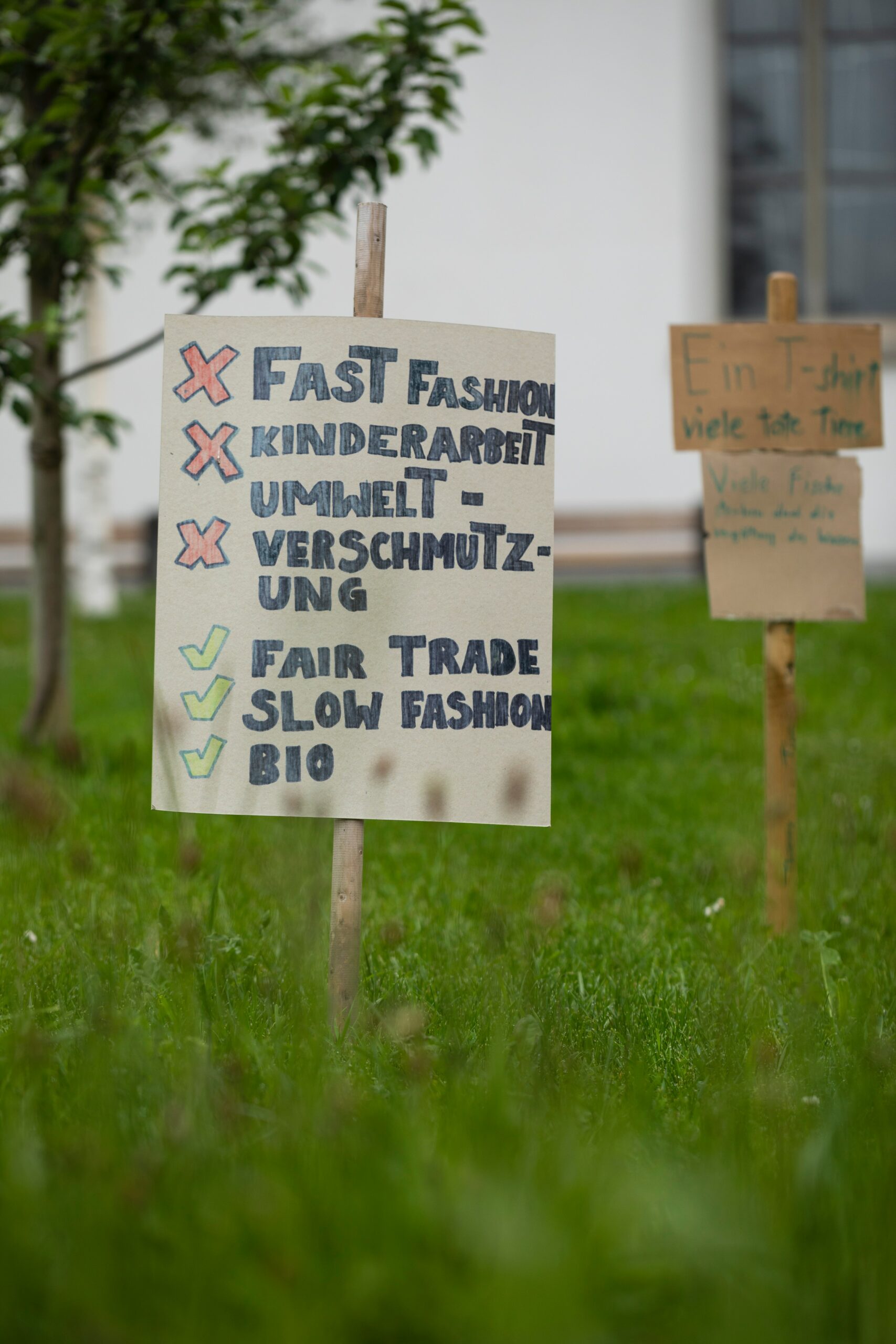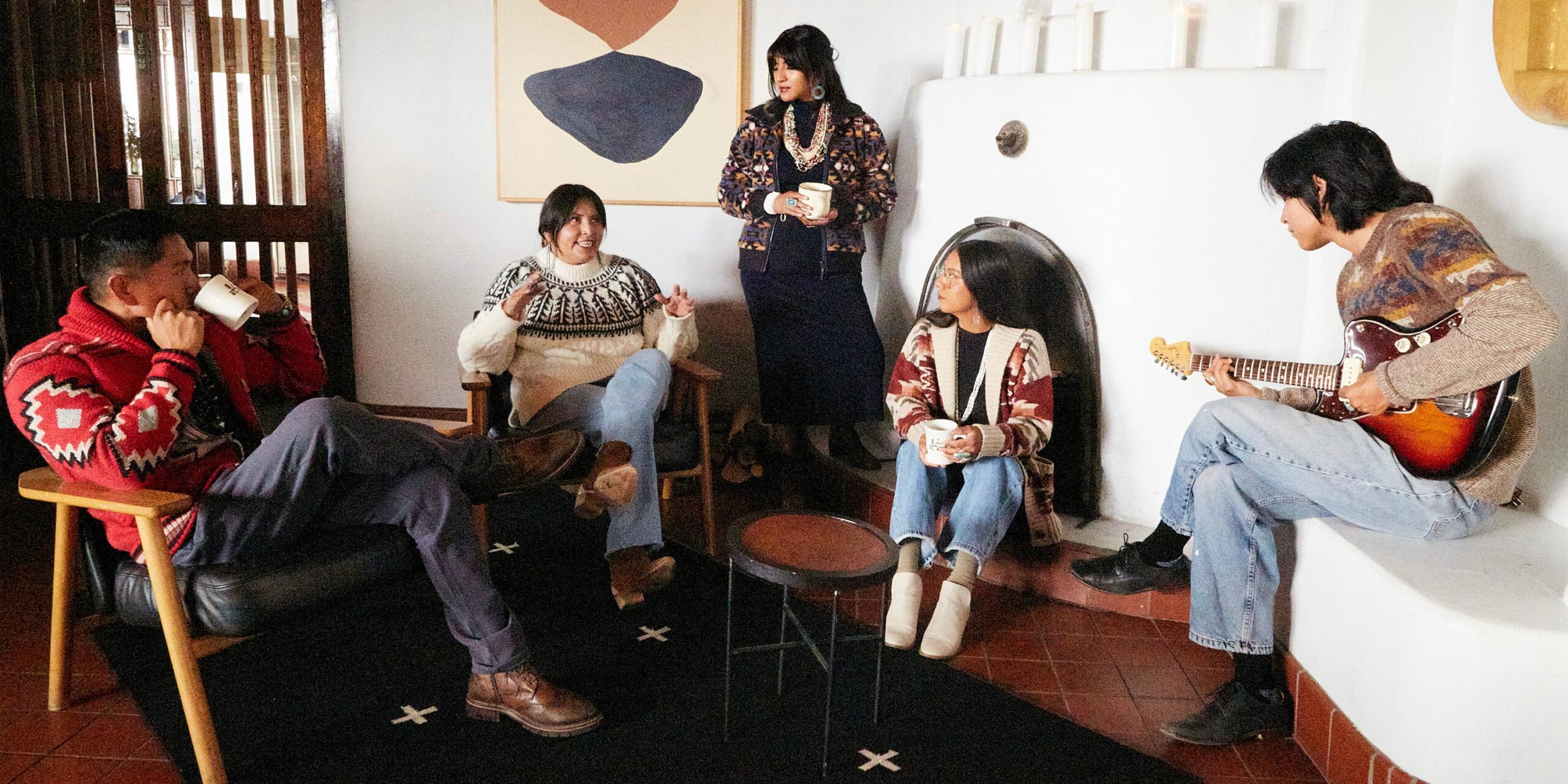Slow fashion is a movement that has been gaining traction in recent years, as consumers become more aware of the negative impacts of fast fashion. Slow fashion is all about quality over quantity, and investing in clothing that will last for years to come. But is slow fashion just a fad, or is it here to stay? In this blog post, we explore the pros and cons of slow fashion, and whether or not it's something that should be adopted by more people.
What is slow fashion?

Slow fashion is a term used to describe a movement in the fashion industry that advocates for more sustainable, ethical, and environmentally-friendly practices. Slow fashion is about creating quality garments that will last longer, as opposed to fast fashion which focuses on quickly churning out trends at an affordable price.
There are a few key principles of slow fashion: buying less, choosing quality over quantity, investing in timeless pieces, repairing and caring for your clothes, and supporting local and independent businesses.
The goal of slow fashion is to create a more sustainable and ethical fashion industry. By investing in well-made clothing, we can reduce the amount of waste produced by the fashion industry and support businesses that are treating their workers fairly.
Slow fashion is not a new concept – it’s been around for centuries. However, it has gained popularity in recent years as consumers become more aware of the impact of fast fashion on the environment and workers’ rights.
If you’re interested in slow fashion, there are a few things you can do to support the movement: buy from independent brands, thrift or vintage shop, mend your clothes instead of throwing them away, and educate yourself and others about the importance of sustainability in the fashion industry.
Sneak peak at the history

Slow fashion is not a new concept, but it has gained popularity in recent years as consumers have become more aware of the negative impact fast fashion has on people and the planet.
The term “slow fashion” was coined by Kate Fletcher in 2007, but the philosophy behind it has been around for much longer. Slow fashion is about creating quality garments that will last for years, rather than disposable items that will end up in landfill after a few wears.
It's about supporting local designers and craftspeople, and valuing fair working conditions and wages for all those involved in the production process. Slow fashion is also about being more mindful of our personal style and only buying what we truly love and will wear often.
The slow fashion movement has been growing steadily in recent years, with more and more consumers becoming aware of the issues surrounding fast fashion. High-profile documentaries like The True Cost and TV shows such as Stacey Dooley Investigates have shone a light on the dark side of the fashion industry, and many people are now looking for alternatives to mass-produced clothing.
There are plenty of ways to get involved in slow fashion, whether it's seeking out ethical brands to support, shopping second-hand or learning to sew your own clothes. Whatever you do, remember that every purchase you make is a vote for the kind of world you want to live in.
The rise of slow fashion

Slow fashion is a movement that began in the early 2000s in response to the problems associated with the fast fashion industry. Slow fashion advocates for sustainable, ethical, and long-lasting fashion over cheap, disposable clothing.
The slow fashion movement has gained traction in recent years as more and more people become aware of the negative impacts of fast fashion. The rise of social media has played a big role in this, as it has allowed people to share information and connect with others who care about the same issues.
There are many reasons why people are choosing to switch to slow fashion. For some, it’s about supporting sustainable and ethical practices. For others, it’s about investing in higher quality garments that will last longer. And for many, it’s simply a way to reduce their impact on the environment.
Whatever the reason, it’s clear that slow fashion is here to stay. As more and more people become concerned about the negative impacts of fast fashion, they are increasingly turning to slow fashion as an alternative. With its focus on sustainability, ethics, and quality, slow fashion is poised to take over the fashion industry – and make a positive impact on the world in the process.
Thinking of the greater good

Slow fashion is all about taking the time to create high-quality, long-lasting garments and accessories. It’s the opposite of fast fashion, which is all about churning out cheap, trend-driven pieces as quickly as possible.
There are lots of benefits to slow fashion. For one, it’s better for the environment. Fast fashion is extremely wasteful, both in terms of the resources used to produce the clothing and the massive amount of textile waste it generates. Slow fashion brands, on the other hand, tend to use sustainable materials and production methods, and they make an effort to reduce waste throughout their supply chains.
Slow fashion is also better for workers. The garment industry is notoriously exploitative, but slow fashion brands are often more transparent about their manufacturing processes and they typically pay their workers fair wages.
Finally, slow fashion pieces tend to be higher quality than fast fashion pieces. They’re made to last longer, so you can wear them for years (or even decades) instead of just a few seasons. And because they’re not mass-produced, you’re less likely to run into someone else wearing the same thing.
So why isn’t everyone shopping slow fashion? Unfortunately, it tends to be more expensive than fast fashion. But if you care about quality over quantity, slow fashion is definitely worth considering.
Why is it so difficult?

The challenges faced by slow fashion are many and varied. One of the biggest challenges is the speed at which fashion moves. Trends come and go so quickly that it can be hard to keep up, let alone produce clothing at a slower pace. Another challenge is that fast fashion is often much cheaper than slow fashion, making it a difficult sell to consumers who are used to getting their clothes on the cheap. Additionally, the infrastructure of the fashion industry is geared towards fast production, meaning that there are few resources available for those wanting to produce clothing in a more sustainable way. Finally, there is a general lack of awareness of slow fashion, meaning that many people are simply not aware that it exists as an alternative to fast fashion.
All of these challenges combine to make slow fashion a tough sell in today's market. However, there are some things working in its favour. The growing awareness of the environmental and social impacts of fast fashion is one such factor. As more and more people become aware of the true cost of their clothes, they may start to look for alternatives that are more sustainable. Additionally, the rise of social media has made it easier for small businesses and independent designers to promote their products, reach new customers, and build a following. This has helped to give slow fashion a boost in recent years and will likely continue to do so in the future.
The problems with fast fashion

The fast fashion industry has come under fire in recent years for a variety of reasons. First and foremost, the industry is notorious for its low wages and poor working conditions. In many cases, workers in fast fashion factories are paid below minimum wage, forced to work long hours, and made to work in unsafe conditions. This has led to a number of high-profile protests and lawsuits against major fast fashion brands.
Secondly, fast fashion is often criticized for its environmental impact. The production of cheap clothing requires a lot of energy and water, and generates a significant amount of pollution. Additionally, most fast fashion clothing is made from synthetic materials that are not biodegradable, meaning they will sit in landfills for centuries.
Finally, fast fashion has been accused of contributing to the rise of consumer culture. By churning out new styles on a weekly basis, fast fashion brands encourage consumers to buy more clothes than they need or can afford. This disposable attitude towards clothing has had a negative impact on both the environment and people's wallets.
How to make the switch to slow fashion?

If you're interested in making the switch to slow fashion, there are a few things you can do to get started. First, take inventory of your current wardrobe and make a list of what you need. Then, start doing some research on brands that align with your values and offer sustainable, ethical clothing options.
Once you've found a few brands you love, it's time to start shopping! Slow fashion is all about quality over quantity, so invest in a few key pieces that will last you for years to come. And don't forget to care for your clothing properly – wash and repair items as needed so they stay in good condition for as long as possible.
Making the switch to slow fashion doesn't have to be difficult – with a little planning and effort, you can easily build a beautiful wardrobe full of pieces you love that also happen to be good for the planet.
How to make it work for you?

Slow fashion is all about making your clothing last longer. It's about finding ways to wear what you have for longer periods of time, and making sure that when you do need to buy something new, you buy something that will last. Here are a few tips to make slow fashion work for you:
-Repair your clothing when it tears or wears out instead of throwing it away. A lot of times, clothing can be easily repaired with a little bit of time and effort.
-Invest in quality over quantity. When you do need to purchase new clothing, make sure you're buying items that are well-made and will last long. Slow fashion is all about investing in timeless pieces that you'll be able to wear for years to come.
-Donate or sell your unwanted clothing instead of throwing it away. There are plenty of people and organizations who would love to have your gently used clothing items.
-Be mindful of the care instructions when washing and storing your clothing. Taking proper care of your clothes will help them last much longer.
The future of slow fashion

The move towards slow fashion is being driven by a growing awareness of the impact of the fast fashion industry on both people and the planet. As consumers become more conscious of the issues, they are seeking out brands that align with their values.
There are signs that the tide is turning, with some major retailers starting to embrace slower, more sustainable ways of doing business. But there is still a long way to go before slow fashion becomes the norm.
The key to making slow fashion stick is education – both of consumers and those working in the industry. We need to continue to raise awareness of the issues and show people that there are alternatives to fast fashion. Only then will we see lasting change.
Conclusion
In conclusion, I think that slow fashion is definitely here to stay. With the increasing awareness of the negative environmental impact of the fast fashion industry, more and more people are looking for sustainable and ethical alternatives. Slow fashion provides a great solution to this problem, and I believe that it will only continue to grow in popularity in the years to come. Thanks for reading!










